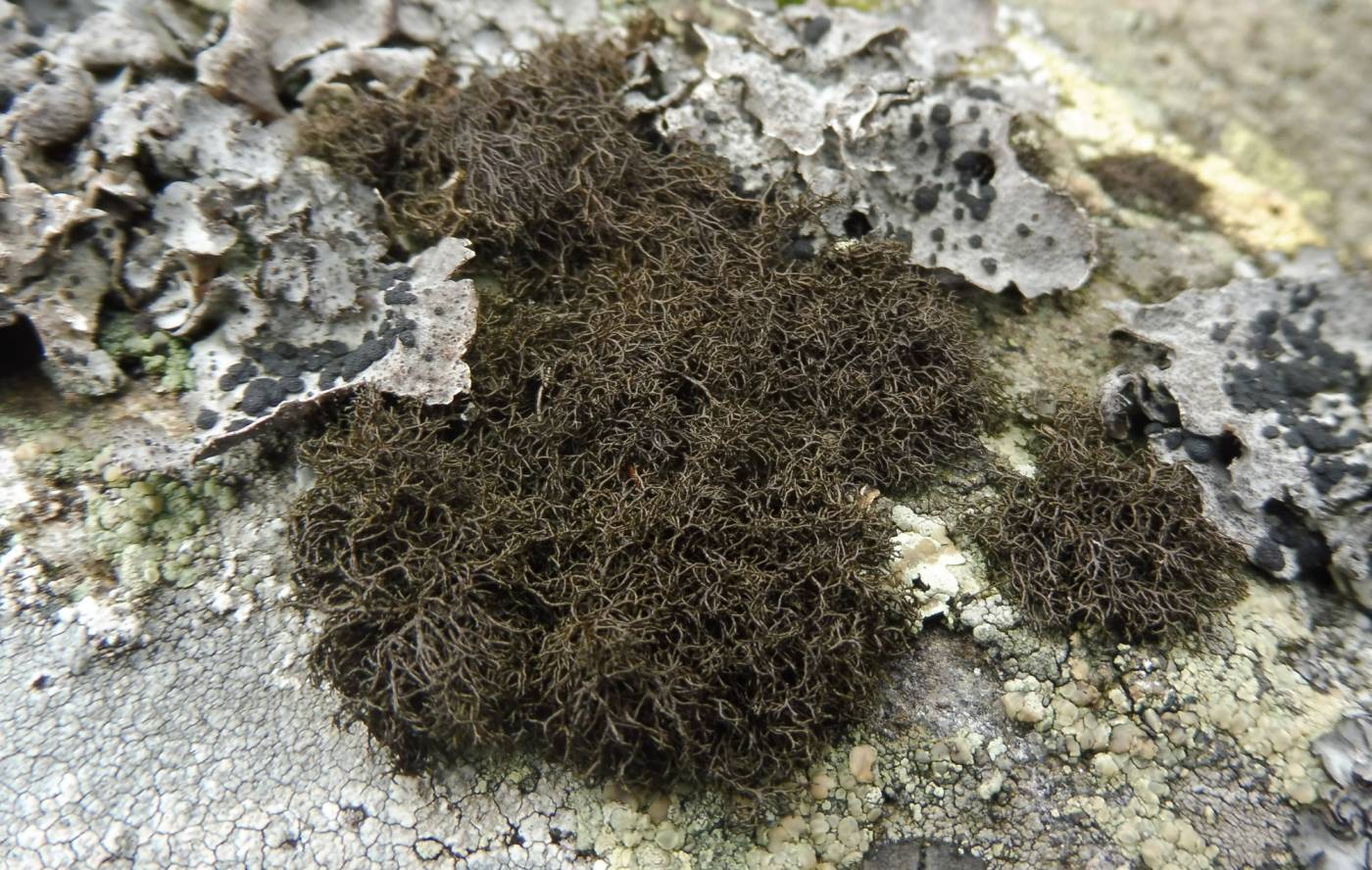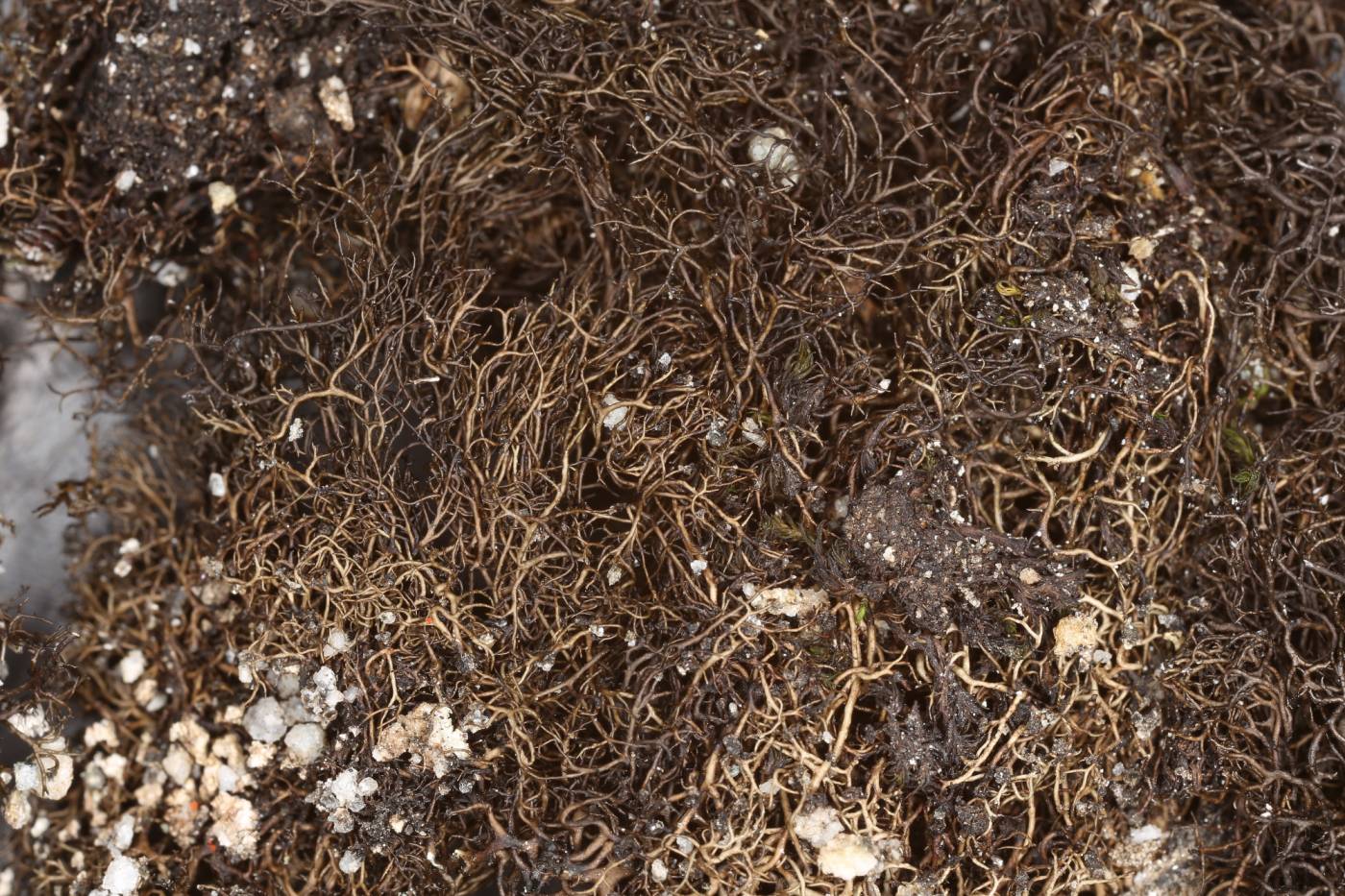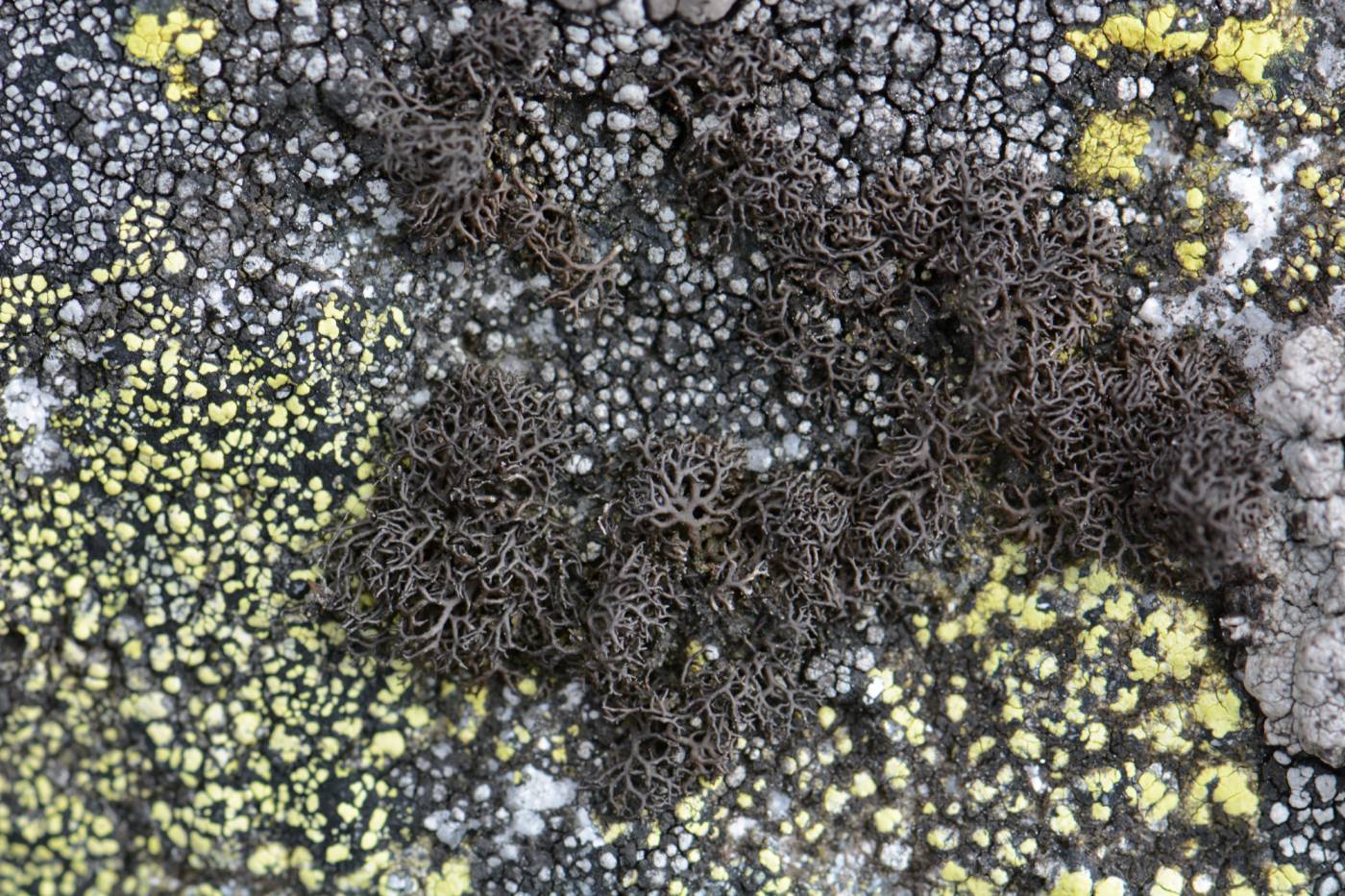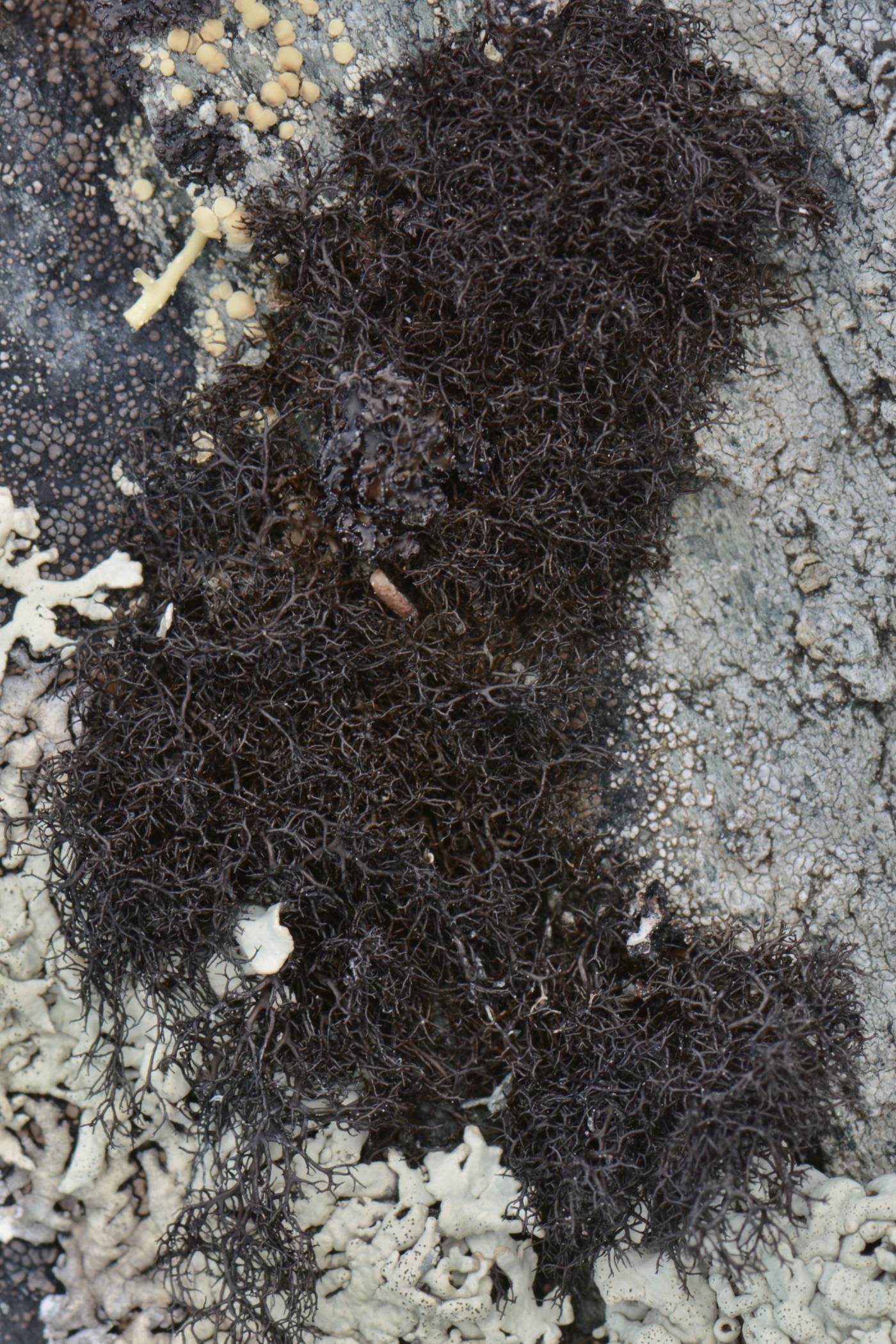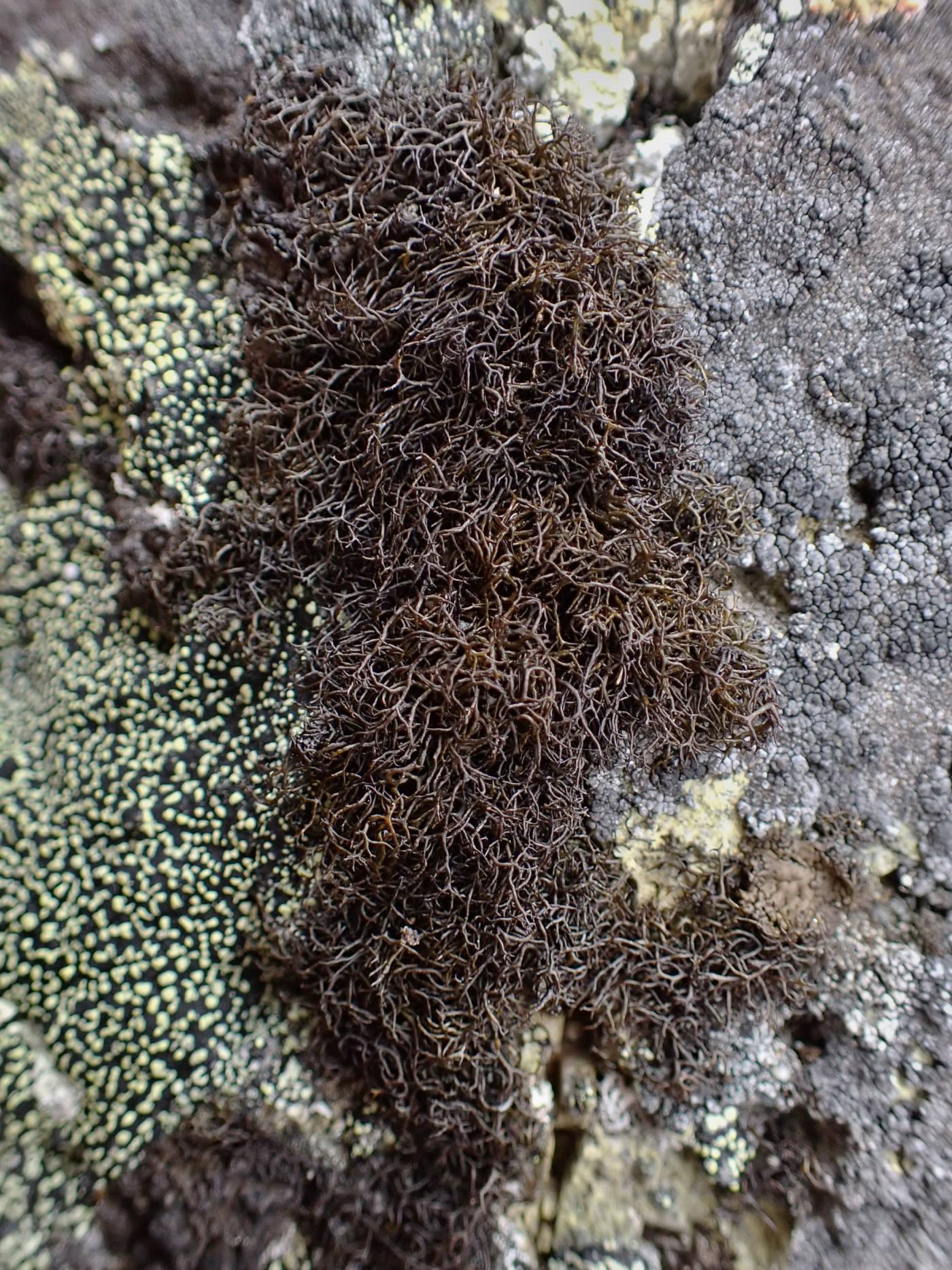Pseudephebe pubescens is an arctic-alpine species which forms cushions of intertwined thin brown-black branches (filaments) on siliceous rocks and stones. In the Czech Republic, it occurs on open stands in mountains (the Šumava, Jizerské hory, Krkonoše, Králický Sněžník and Hrubý Jeseník Mts), rarely also at lower elevations with inverse microclimate (the Adršpašsko-teplické skály sandstone area). It used to be recorded in the Brdy hills and Krušné hory Mts in the past too.
According to recent studies (Boluda et al. 2016, Garrido-Benavent et al. 2021), P. pubescens is morphologically distinguishable from the closely-related P. minuscula (not recorded in the Czech Republic) only in polar areas. Consequently, the authors recommend that specimens without molecular data are identified as P. pubescens agg. There is no molecular data available for the Czech populations so far.
Literature: Boluda C. G., Hawksworth D. L., Divakar P. K., Crespo A. & Rico J. V. (2016): Microchemical and molecular investigations reveal Pseudephebe species as cryptic with an environmentally modified morphology. – Lichenologist 48: 527–543. Garrido-Benavent I., Pérez-Ortega S., de los Ríos A., Mayrhofer H. & Fernández-Mendoza F. (2021): Neogene speciation and Pleistocene expansion of the genus Pseudephebe (Parmeliaceae, lichenized fungi) involving multiple colonizations of Antarctica. – Molecular Phylogenetics and Evolution 155: 107020.
taxonomic classification:Ascomycota → Lecanoromycetes → Lecanorales → Parmeliaceae → Pseudephebe
Red List (Liška & Palice 2010):VU – vulnerable
Red List (Malíček 2023):C3 – endangered
Occurrence in the Czech Republic
All records: 43, confirmed 28. One click on a selected square displays particular record(s), including their source(s).
